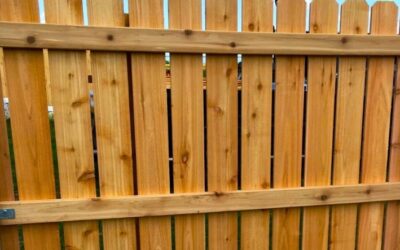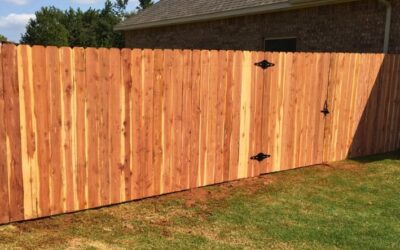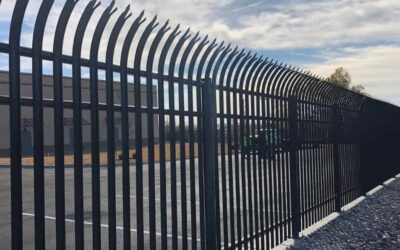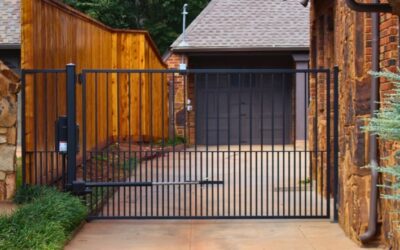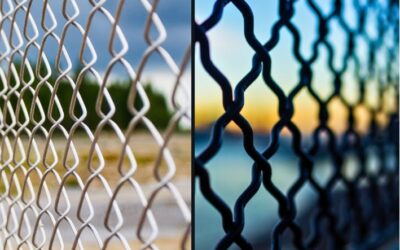10 Common Fence Installation Mistakes to Avoid
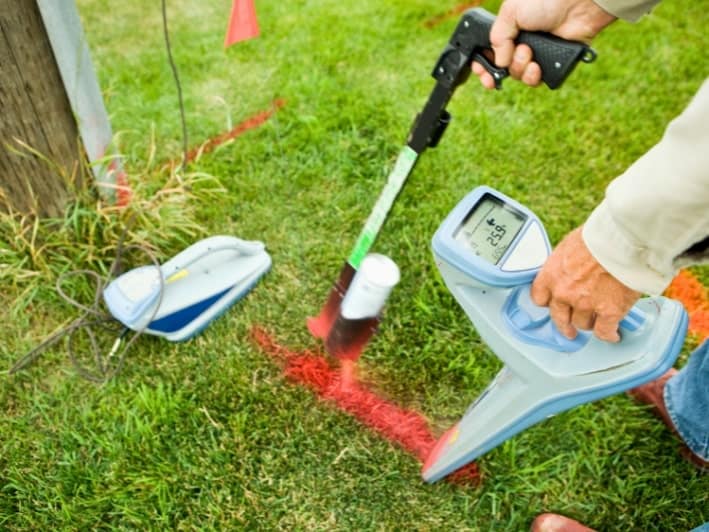
Home » Fence Blog »
Installing a fence seems straightforward, but many homeowners make critical errors that can lead to costly repairs and a poorly functioning fence.
Whether you’re a DIY enthusiast or hiring a professional, understanding the common fence installation mistakes is key to ensuring a long-lasting, durable fence that enhances the value of your property.
Instant fence quote
Draw your fence online and get your price instantly.
Understanding the Basics of Fence Installation
Installing a fence requires more than just putting up posts and attaching panels. Planning, careful measuring, and using the right fence materials are crucial to a successful installation. When you skip steps or make certain assumptions, it’s easy to end up with a fence that doesn’t meet your needs.
The Importance of a Proper Fence Installation Plan
A comprehensive installation plan can prevent future issues, such as leaning fence posts, sagging panels, and uneven heights. From picking the right materials to ensuring that your fence complies with local regulations, a proper plan will set the stage for a successful installation.
Common Planning Mistakes:
- Failing to check local regulations or permits
- Incorrectly measuring your yard
- Skipping a soil test for post-holes
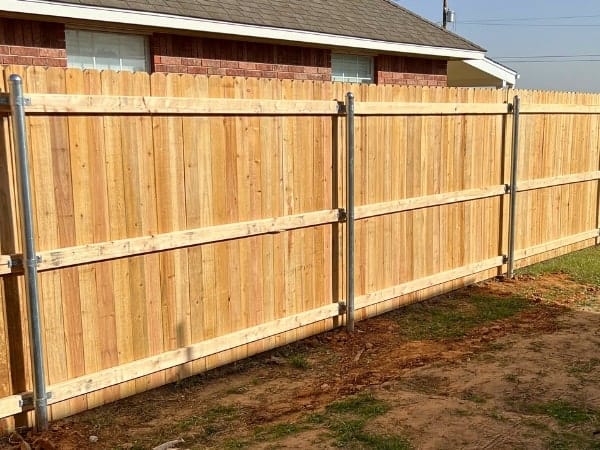
Mistake 1: Failing to Check Property Lines
One of the biggest mistakes homeowners make is neglecting to check property boundaries before installing a fence. This can lead to disputes with neighbors and may even result in having to tear down the fence.
How to Avoid Boundary Disputes
Before starting, consult with your neighbors and have a professional survey your land. Most municipalities have strict regulations regarding fence placement, so ensure your fence is within your property limits.
For official information about property boundary laws, visit the Open Data Portal for the City of Oklahoma City, Oklahoma.
Mistake 2: Ignoring Local Zoning Laws and Permits
Many forget to check local zoning laws or acquire permits for their fencing projects. Local governments often regulate the height, style, and materials used in fencing, and ignoring these rules can result in fines or a forced removal of your fence.
How to Stay Compliant with Local Regulations
Visit your local city planning or zoning department to understand the guidelines. Check for fencing restrictions specific to your area and ensure you secure any necessary Oklahoma fence permits.
Mistake 3: Using the Wrong Materials
Choosing the right materials is essential for building a fence that will withstand the elements. Using low-quality materials or the wrong type for your environment can result in premature wear and tear, rust, or rot.
Selecting the Best Materials for Your Fence
Consider your climate when choosing materials. For example, metal fences might rust in humid environments, and untreated wood fences may rot in areas with heavy rainfall. Pressure-treated wood, vinyl, and aluminum are common choices for long-lasting fences.
Fence OKC
Oklahoma’s modern fence company.
Mistake 4: Incorrect Post Placement
Fence posts are the foundation of any fence, and incorrect post placement can cause major issues, including leaning or instability. Posts that are spaced too far apart or not set deep enough can compromise the strength of your fence.
Best Practices for Post-Placement
Ensure posts are spaced evenly, typically between 6 to 8 feet apart, and set at least 1/3 of their length in the ground. For optimal stability, dig deep post holes and add concrete for extra reinforcement, particularly in areas with loose soil.
Mistake 5: Failing to Consider Soil Conditions
Soil type plays a critical role in the stability of your fence posts. Some soils, such as clay or sand, require different installation techniques to ensure proper support.
Adjusting Fence Installation to Soil Types
Conduct a soil test to understand the specific challenges your soil presents. In soft or sandy soil areas, wider post holes and concrete footing are essential. Clay soils may need gravel at the base to improve drainage and prevent water damage.
Mistake 6: Not Accounting for Terrain
Uneven terrain can pose challenges during installation. If you don’t account for slopes or dips, your fence may look uneven, or gaps may appear under it, which can compromise its purpose—whether for privacy, security, or aesthetics.
Solutions for Fencing on Sloped Ground
There are two main techniques for handling sloped terrain: racking and stepping. Racking involves angling the fence to match the slope while stepping creates a stair-step pattern. Both options can help ensure your fence looks neat and functions pcorrectly
Mistake 7: Skipping the Utility Check
Hitting an underground utility line can be dangerous and expensive. Many homeowners skip this step, leading to delays and added costs.
How to Avoid Damaging Utility Lines
Before digging post holes, contact your local utility companies to locate underground lines. In the U.S., you can call 811 to have your utilities marked for free.
For more information, visit OKIE811. Or dial 811 from any phone in Oklahoma.
Mistake 8: Poor Gate Placement and Installation
The gate is one of the most important elements of a fence, but it is often an afterthought in the planning process. If not placed or installed properly, gates can sag or fail to open and close smoothly.
Tips for Proper Gate Installation
Install the gate on level ground and use heavy-duty hinges to support its weight. Additionally, position the gate posts deeper than regular fence posts to ensure they can handle the stress of constant use.
Mistake 9: Neglecting Fence Maintenance
Even a perfectly installed fence will deteriorate without regular maintenance. Wooden fences need staining or painting, and metal fences require rust protection.
Maintenance Tips for Long-Lasting Fences
To prolong the life of your fence, perform annual inspections, clean it regularly, and address any damage immediately. Treat wood fences to prevent rot and rust-proof metal fences to avoid corrosion.
We Can Help!
Estimates are always free.
Mistake 10: Installing the Fence in the Wrong Season
Timing your fence installation is key to avoiding common issues. Many homeowners try to install fences during winter or rainy seasons, leading to complications like waterlogged soil or frozen ground.
Ideal Seasons for Fence Installation
Spring is the best time for fence installation, as the ground is easier to dig, and weather conditions are more predictable. Depending on your local climate, fall can also be an excellent time.
FAQs
The most frequently asked questions about fence installation mistakes.
What is the most common fence installation mistake?
The most common mistake is failing to check property boundaries, leading to costly disputes and fence removal.
How deep should fence posts be set?
Fence posts should be at least one-third of their length into the ground, typically about 2 to 3 feet deep.
Is it necessary to get a permit before installing a fence?
Yes, many local governments require a permit before installing a fence. Check with your local zoning department for specific requirements.
What materials last the longest for fences?
Vinyl and aluminum fences are known for their longevity, and they require minimal maintenance compared to wood or chain-link fences.
Can I install a fence on a slope?
Yes, fences can be installed on a slope using racking or stepping techniques to ensure even height and proper function.
What should I do before digging fence post holes?
Always contact 811 to locate underground utility lines before digging post holes to avoid hitting vital infrastructure.
Conclusion: 10 Common Fence Installation Mistakes to Avoid
Installing a fence is a significant investment, so avoiding common mistakes is crucial to ensuring your project’s success.
Attention to detail will save you time, money, and frustration, from proper planning and post-placement to considering soil types and adhering to local regulations.
Following these guidelines will help you build a fence that meets your needs and lasts for years to come.
Let's Have a Conversation
Which Fence is Best for Oklahoma High Winds?
What Type of Fence Works Best in Oklahoma's High Winds? Strong, persistent winds are a defining characteristic of Oklahoma's weather, often leading to significant fence damage. Whether dealing with gusty storms, fallen debris, or the notorious...
Why Cedar Fences Are Perfect for Oklahoma Properties
Why Cedar Fences Are Ideal for Oklahoma Yards Cedar fences have long been a staple of beautiful and functional outdoor spaces. For homeowners in Oklahoma, where the climate varies dramatically between scorching summers and icy winters, cedar fences...
What Is a High-Security Fence?
An Introduction to High-Security Fencing In today’s world, where safety is a top priority, a high-security fence installation is the perfect solution for protecting properties against unauthorized access and potential threats. Whether for...
5 Benefits of Installing a Chain Link Fence in Oklahoma
5 Advantages of Installing a Chain Link Fence in Oklahoma Chain-link fences are among the most popular and practical solutions for securing property. They offer unique advantages for Oklahoma residents and are tailored to their environment,...
5 Signs It’s Time to Upgrade Your Automatic Gate System
5 Reasons to Update Your Driveway Gate In today’s world, your home or business’s security is only as strong as your entry points. Automatic gate systems play a significant role in enhancing property security, ensuring smooth access, and adding a...
Comparing Galvanized and Vinyl-Coated Chain Link Fencing
Comparing Chain Link Fencing Options: Standard vs. Vinyl-Coated Choosing the proper fencing for your property requires careful consideration of factors like durability, aesthetics, maintenance, and budget. Chain link fences, known for their...
WHAT WE DO
PROFESSIONAL FENCE CONTRACTOR IN OKC
For over a decade, Fence OKC has proudly stood as Oklahoma City’s go-to modern fence company, dedicated to excellence in all aspects of fencing. Whether you’re looking to enhance the security or elevate the aesthetics of your property, our expertise has been shaping neighborhoods and fortifying businesses since 2011.
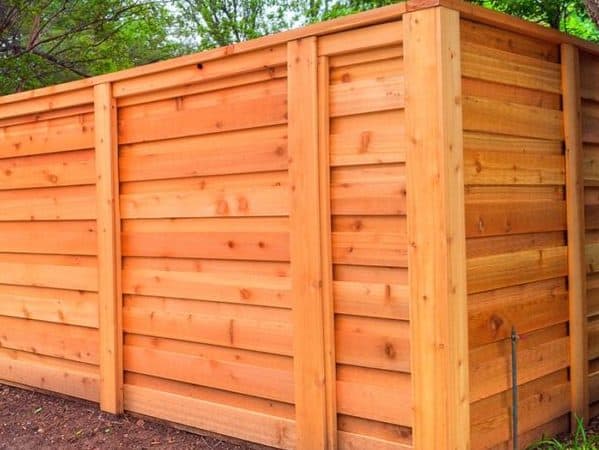

RESIDENTIAL FENCE
We specialize in custom cedar fence installation in Oklahoma, especially wood privacy and picket fencing. We also offer hand-built cedar fences built on-site and by the “stick.”
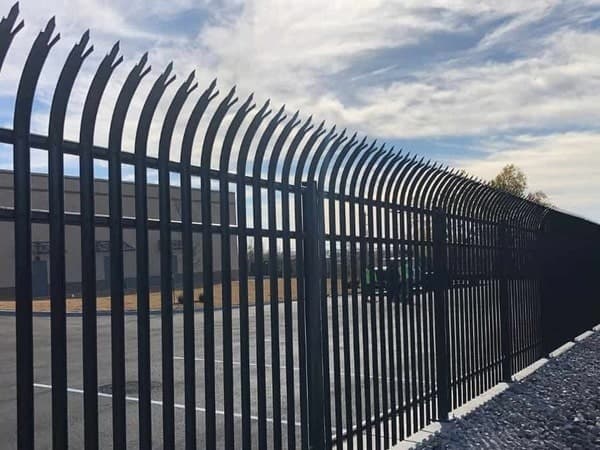

COMMERCIAL FENCING
Fence OKC prides ourselves on professionalism and attention to detail. We can install any kind of commercial fence from high security fence to heavy duty wrought iron fencing.
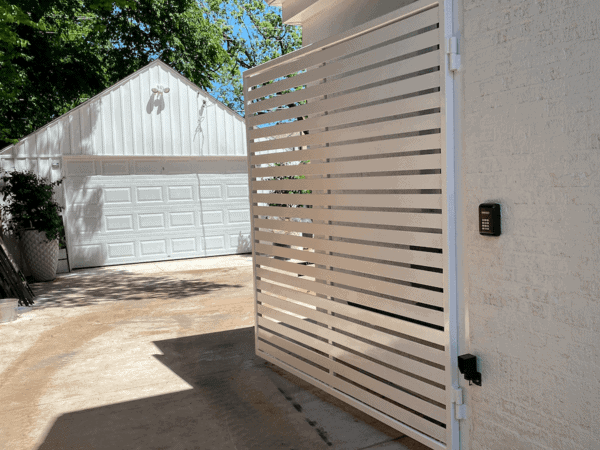

AUTOMATED GATES
Fence OKC is among one of the few licensed providers in Oklahoma for automated gate installations, repairs, and manufacturing, catering to commercial and residential needs.
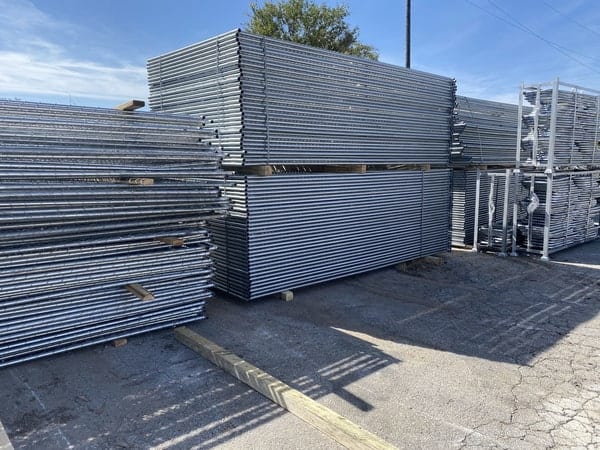

TEMPORARY FENCE PANELS
Temporary chain link fence panels are favored for construction zones, events (both indoor and outdoor), and sports gatherings, especially when installing in-ground posts isn’t feasible.
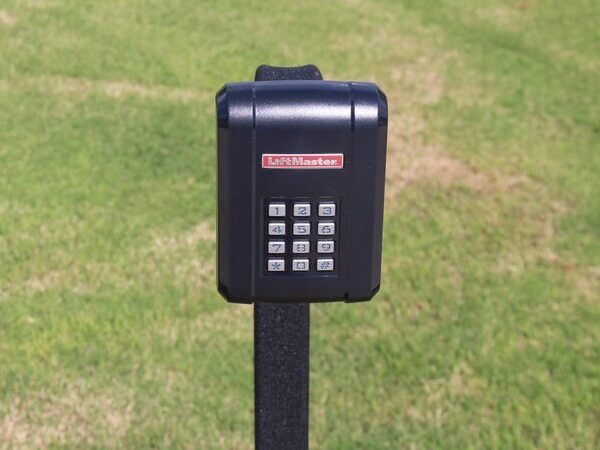

ACCESS CONTROL SYSTEMS
Protect your residential or commercial property with our state-of-the-art gate service and access control systems. Licensed and bonded, we can help with your security concerns.
Need Some Help?
Should you need help or have any inquiries, the team at Fence OKC stands ready to assist. We are dedicated to addressing all your fencing concerns in Oklahoma City, ensuring you choose the ideal fence for your needs.
OKLAHOMA CITY, OKLAHOMA
LOCATION AND SERVICE AREAS
Located in the heart of Oklahoma City, Fence OKC proudly serves a broad spectrum of areas, ensuring every corner of our community benefits from top-tier fencing solutions. We've got you covered whether you're near or a bit further out.


Fence OKC Service Areas
Edmond • Oklahoma City • Norman • El Reno • Moore • Yukon • Mustang • Piedmont • Guthrie • New Castle • Blanchard • Tuttle • Choctaw • Harrah • Nichols Hills • Arcadia • Jones • Newalla • Gallardia • Del City • Tulsa • Noble • Midwest City • Kingfisher • Stillwater • McCloud • Bristow • Sapulpa • Broken Arrow • Sand Springs • Owasso • Enid • Weatherford • Hinton • Elk City • Clinton • Woodward







